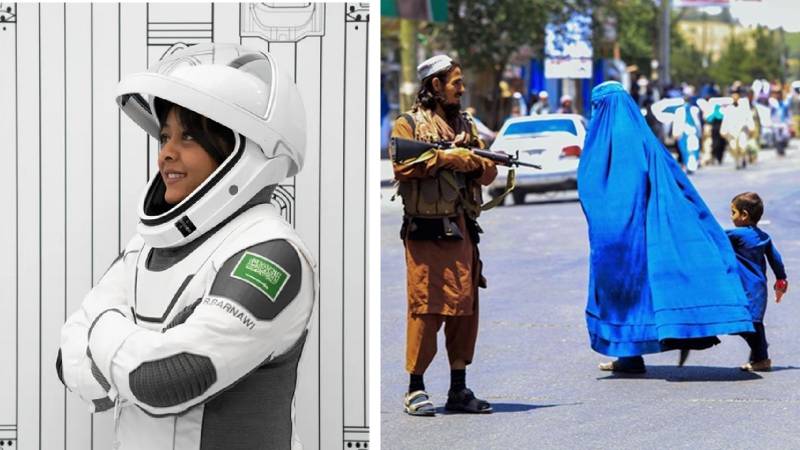
Islam is a unifying thread across the Muslim world, but its practice and interpretation vary widely based on historical, cultural and political contexts. Saudi Arabia and Afghanistan offer starkly contrasting perspectives on Islam, reflecting their unique journeys through conservatism, modernisation and fundamentalism.
While Saudi Arabia attempts to reconcile its strict Wahhabi roots with a modern, globalised identity, Afghanistan under Taliban rule clings to a regressive and rigid interpretation of Islamic law, particularly in its treatment of women.
Saudi Arabia: Evolving beyond narrow Wahhabism
For much of its modern history, Saudi Arabia has been synonymous with Wahhabism, a puritanical branch of Sunni Islam. Established in the 18th century as part of a pact between the Wahhabi movement and the Al-Saud family, this ideology shaped the Kingdom’s laws and social norms. Strict dress codes, gender segregation and the absence of cultural entertainment were defining characteristics.
The discovery of oil in 1938 transformed Saudi Arabia into a global economic powerhouse but did little to alter its conservative social fabric. Women were forbidden from driving until 2018, religious police patrolled public spaces to enforce Islamic norms and live music and cinema were banned. This changed dramatically under Crown Prince Mohammed bin Salman’s Vision 2030, a reform agenda aimed at diversifying the economy and projecting a modern, progressive image of Saudi Arabia.
Today, the Kingdom hosts concerts, fashion shows and sporting events that would have been unimaginable a decade ago. Saudi women now drive, work in various industries and travel without male guardianship. These reforms reflect a society grappling with its dual identity: a modern state vying for global influence and an Islamic society rooted in tradition.
However, this transformation is not without contradictions. While Riyadh dazzles with events featuring global stars like Céline Dion and Jennifer Lopez, the Kingdom continues to uphold one of the harshest justice systems in the world. Mass executions, particularly of foreign nationals, reveal a darker side of its governance, underscoring the tension between progress and repression.
Afghanistan: The grip of Taliban fundamentalism
In contrast to Saudi Arabia’s evolving interpretation of Islam, Afghanistan under the Taliban remains firmly entrenched in a regressive, fundamentalist ideology. The Taliban’s version of Islam, heavily influenced by Deobandi principles and Wahhabi teachings, emerged from decades of conflict and foreign intervention.
During the 1980s, Saudi Arabia played a significant role in funding madrassas along the Afghan-Pakistan border, which indoctrinated young men with conservative Islamic teachings. These madrassas served as a breeding ground for the Taliban, whose rise to power in the 1990s marked a dark period for Afghan women and minorities.
Saudi Arabia’s path forward lies in balancing its conservative Islamic roots with the demands of a modern state. The Kingdom’s reforms are driven by necessity, as it seeks to diversify its economy and attract global investment
Since regaining control in 2021, the Taliban have reinstated draconian laws that systematically exclude women from public life. Girls are banned from attending schools and universities, women cannot work in government institutions or businesses and they are prohibited from appearing in media or even visiting parks without a male guardian. These policies not only violate basic human rights but also contrast sharply with the relative progress seen in other Muslim-majority countries, including Saudi Arabia.
Women’s rights: A tale of two realities
The status of women offers a stark lens through which to compare Saudi Arabia and Afghanistan.
Women in Saudi Arabia have gained unprecedented freedoms in recent years. They can now pursue higher education, work in diverse industries and participate in public life. However, cultural conservatism still imposes limits and full equality remains a distant goal.
Under Taliban rule, Afghan women face unparalleled restrictions. They are effectively erased from public life and denied education, employment and the freedom to move independently. This is a severe divergence from Islamic teachings that emphasise education and respect for women.
The influence of Wahhabism, exported by Saudi Arabia in the late 20th century, has shaped the ideological framework of groups like the Taliban. Yet, while Saudi Arabia has moved toward moderation and modernity, Afghanistan has doubled down on rigid fundamentalism.
Saudi Arabia’s Vision 2030 reflects an acknowledgment that economic growth and global engagement require a more inclusive society. Afghanistan, in contrast, remains isolated, with its rulers prioritising ideological purity over progress.
Saudi Arabia’s path forward lies in balancing its conservative Islamic roots with the demands of a modern state. The Kingdom’s reforms are driven by necessity, as it seeks to diversify its economy and attract global investment. Its evolving interpretation of Islam may inspire other Muslim-majority nations to explore similar pathways.
Afghanistan, however, faces a grimmer future. The Taliban’s refusal to adapt to the changing world not only isolates the country but also perpetuates suffering for its people, particularly women. The global community’s challenge lies in finding ways to support Afghan civil society while addressing the Taliban’s oppressive policies.
The stories of Saudi Arabia and Afghanistan underscore the diversity of Islam and its interpretations. While both nations have been shaped by conservative ideologies, their trajectories could not be more different. Saudi Arabia’s embrace of reform signals hope for a more inclusive future, while Afghanistan’s descent into fundamentalism highlights the dangers of ideological rigidity.
For the Muslim world, these contrasting paths serve as a reminder that Islam’s essence is not monolithic but adaptable to the needs and aspirations of its followers. The choices made by leaders and societies will determine whether Islam is a force for progress or a tool of oppression in the 21st century.

